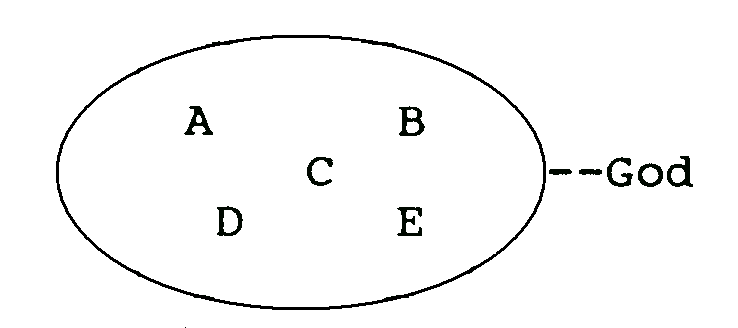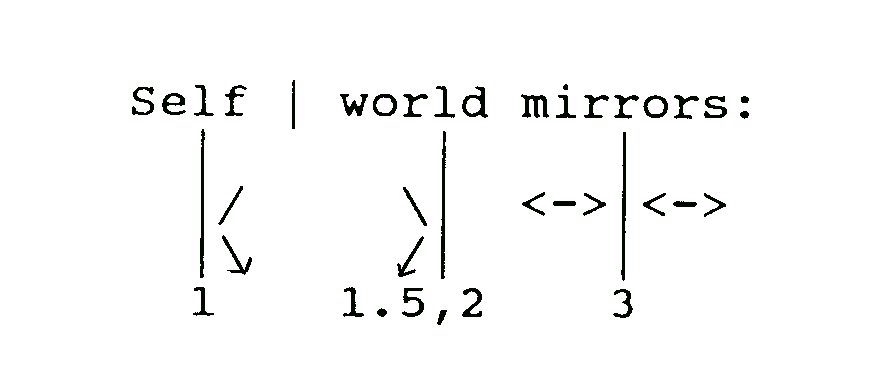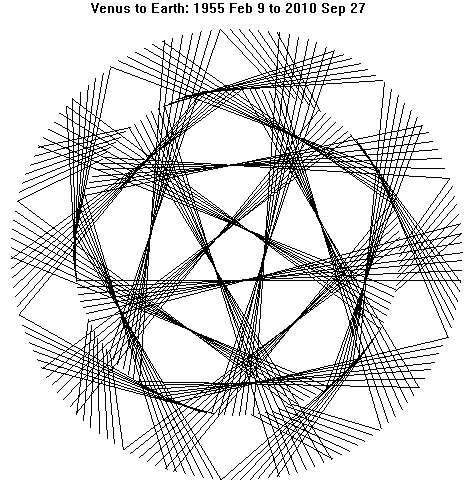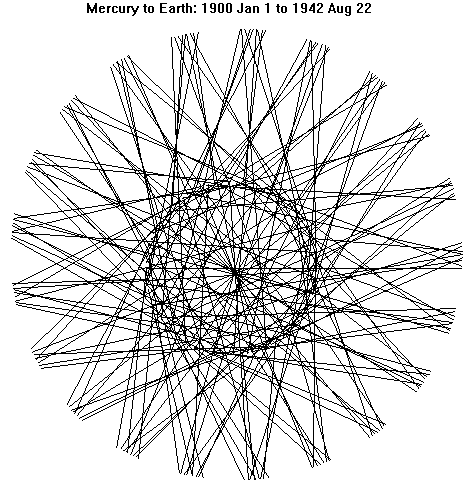LA-CCRS Philosophy as understood by Mark Pottenger in January 1991
Mark Pottenger
Since it is appropriate for a Sagittarius issue (yes, we are running late), I’m back trying to express my current perception of the philosophy and pattern of thought at classes of the psycholinguistics branch of LA-CCRS. I will repeat very little of what I presented in my last article on this subject in the Pisces 1988 issue, so what is here is a series of loosely connected thoughts.
Each of us believes “the world I see is the world out there”, that our words are (our understanding is) about objects in the world. Actually, what we believe determines what world we see “out there”. (Not in the sense that objects in the world are forced to match our understanding, but in the sense that we perceive the world through the filter of our understanding.) Acceptances and the world of form are an equation.
The self is. Knowledge, world view, learned data, etc. are not the self.
A basic distinction we constantly come back to is between experience or feeling and meaning. Experiences and feelings simply are. Meanings are assigned to experiences and feelings, but are not inherent in them. The “same experience” might “make” one person mad, another sad, and another glad. To use an analogy from computer programming: “external stimuli” (experiences) can be viewed as keys into a hash table (a way of looking things up) in which many keys (experiences) retrieve the same entry (produce the same feeling or reaction). The feeling evoked is the same in all cases, despite an apparent plethora of “external causes”. World views, biases, trained responses, and any other mental baggage you want to name determine what meanings get assigned to experiences and feelings. Self reflection (or self perception) is the (fairly rare) ability to be aware of internal feelings without the intrusion of mentally assigned meanings.
A phrase for this might be: “meaning starts with me”.
One trend in the last few years has been an increasing inclusiveness. We have more discussion and awareness of other religions and the commonalities of many aspects of most religions. We are also more conscious of the continuing expression of all levels of awareness even as we focus on mystical and spiritual levels. We constantly go back and forth between different levels of awareness all day long.
I have gotten a better appreciation of what Christianity once was, and how poorly most modern churches with that label represent their origins. Salvation for ignorant masses is a sad comedown for a religion that started with spiritual development and mysticism requiring both knowledge and discipline. In fact, what I seem to see is that much practice of old religions and new age techniques is like Cargo Cults: form without substance.
Since I still enjoy word play, alliteration and capsule presentations, I will list a few trichotomies here to depict the levels of consciousness we frequently discuss:
|
Level 1 |
Level 2 |
Level 3 ... |
|
Physical |
Mental |
Spiritual |
|
Passive |
Active |
Inclusive |
|
Reaction |
Choosing |
Acceptance |
|
Sitter |
Seeker (shopping schools of thought) |
Seer |
|
Ennui |
Expectations |
Expectancy |
|
Botheration |
Becoming |
Being |
|
Have/Don’t |
Do |
Be |
|
Was |
Will be |
Is |
|
Religion |
Philosophy/Psychology |
Mysticism |
|
Reflexes |
Thoughts |
Feelings |
|
Instinct |
Intellect |
Inspiration |
|
Rote past |
Open self |
Open infinite |
|
Sleep |
Directive/Controlling Meditation |
Receptive/Understanding Meditation |
|
Unconscious |
Self conscious |
Cosmic consciousness |
Sometimes in our discussions we list a level between 1 and 2 where people begin to be self-aware. As you can see by the ellipsis, we do not believe level three is the end of the road. It is just the latest signpost we have reached, and we have almost no idea what comes next (though we are sometimes curious and excited). It is a realm in which we are still taking baby steps. It is an area we are still just beginning to perceive, and for which we still lack many concepts for clear description. Further steps may take us from this first perception of a new mental level to new levels of concepts. As someone said, we are not created finished. (From another perspective, we are complete and not created at all.)
My perception of third level awareness is hard to describe. It is passive yet excited, openly accepting, ????
One distinction in the list above that I think deserves special attention is between expectations and expectancy. Expectations involve beliefs about a world (and usually attempts to force the world to match the expectations), while expectancy is a pure feeling without a specific object. Expectations are very much in the to-from world.
Behaviorism, with its focus on external causes, is a level 1 psychology. Psychoanalysis, with its internalized external causes, fits level 1.5. Self-image psychology fits level 2. Transpersonal psychology, dealing with unity and a spiritual base, gets to level 3.
A capsule description of a day spent in level 1 to-from reality is “rehashing the past, reacting to the world and rehearsing the future”. Almost no time is spent simply experiencing or enjoying the present. Level 1 thinking is in parrot land: second hand (used) reality. Level 1 thinking is very good at fault finding; level 3 thinking shows why a fault finding person always will have faults to find.
A good level 2 practice is to write a list of current positive, negative and neutral things in your life, and what you can do to increase the positive. Or meditate (practice the modern version of magic). Or look at your attitude in facing a day’s work: do you feel frustration or excitement? Or ask yourself: Who am I? Where am I from? Why am I here? Where am I going to?
Level 3 is a private and unteachable area. I believe the form of awareness of some eastern teachings in which the number of sensations approaches infinity as the duration of sensations approaches zero (and the sensations are experienced without evaluation) is one form of level 3 activity.
One theme we keep coming back to in classes is IS. If you take a view that drops the limitations of space and time, then everything we usually describe as past, present, future, here, there or anywhere is one large IT IS (the capital SELF of some writings). In such a framework, questions of free will versus determinism become irrelevant. Since the “future” determined by all actions IS, questions about the “cause” or “source” of particular actions are moot. Given my taste for science fiction, I also sometimes think the IS includes all possible alternate and imaginary worlds.
A universal perspective also makes the classical idea of knowledge as memory make sense. If everything IS, learning something new is really just no longer ignoring something. Also, perhaps deja vu is a brief suspension of our usual barriers to awareness of what IS. A view of the IS also opens up the realm of the collective unconscious and the possibility of exploring time (past and future).
THE CIRCLE OF BEING: “Be” verbs (is, am, are) are an interesting linguistic issue. In a level 1 to-from world view, “be” verbs are usually red flags of fixed positions. (A few acronyms: Interminably Stuck, Infinitely Stable, Indefinitely the Same, Always Maintained, Always Reacting to Events, Always Repeating Experiences. A key phrase: “I am, so I don’t need to think.”) In level 2 mentalism, we begin to separate our positions from our identity, and we shift emphasis to becoming or doing. In level 3 cosmic consciousness, we return to “be” verbs with a different scope (see “IS” above).
Another linguistic point: prepositions are red flags of dualistic thinking.
I have come to accept certain assumptions that might look elitist to some: There have been, might now be, and will be masters or teachers who operate at a different level from most of us. Such masters can and do have disciples who understand more of their teachings than most people. Such understanding can be innate, but usually comes through discipline and study. To give an analogy, picture a master as someone high up on a slope, disciples as people lower on the slope, and the masses as people at the base of the slope. If the master clearly but softly speaks, describing the wonders visible from his height, only the disciples hear and are high enough to have a partial view of what the master sees and have the chance to understand—the masses hear either nothing or distorted fragments which they can’t relate to the view from their level.

Another theme that keeps recurring is the impossibility of teaching and the private nature of learning. Steps of mental or psychic or spiritual development can not be taught any more than puberty can be taught—development will always occur at the individual’s rate. Teaching is at best providing a key when a person is ready to unlock and open a door—people still have to open their own doors. When a person is ready to learn, the teacher will be there—whether another person, an article, a conversation, a TV show, a book sitting on the shelf for years that finally gets read, or even a book read many times that is now understood in a new way. When a person is not ready to learn, almost any teaching effort will be wasted. Imagine trying to get water through a clogged filter—something will get through if you apply enough pressure, but not much. Trying to teach what and when an individual is not ready to learn is a major failing of much conventional education.
A sort of digression: making a distinction between education and training. Ask a parent how they would feel about having a child in a “sex education” class versus having a child in a “sex training” class. How safe are roads with people who have had “driver education” but not “driver training”? Training has more to do with animals, reflexes, physical functioning and practicality while education has more to do with intellectual understanding and concepts. Much training can still be accomplished without the readiness mentioned in the preceding paragraph as a prerequisite for successful learning.
Knowledge can be viewed as a balloon. The more we know, the more we are aware we don’t know because the expanding surface of our knowledge keeps touching larger areas of the unknown. This intimidates some people and exhilarates others. (I question any view of enlightenment as having no questions left—I think it just opens the way for more questions.)
Growing apart: Since learning is private, even people in the “same” environment will learn and grow at different rates. This can lead to the breakup of relationships when two people who were similar enough to communicate as peers grow apart. This is a natural consequence of growth and needn’t be viewed as any kind of personal failure of either individual in the relationship. The relationship itself is simply outgrown. This does not mean that relationships between different levels of development can’t happen—in fact, total equality can also interfere with relating when it means nobody has anything to contribute.
One terminology change in our classes has been a shift from “push” to “pull” as the word most used in describing motivation. Think about the connotations and you will see why.
POWER and RESPONSIBILITY: As I discussed in the last article, to-from world views place all power and responsibility in the external world and many forms of mentalism place all power and responsibility in the individual. Both viewpoints can be cruel if accepted completely: the first leaves the individual powerless and the second makes the individual responsible for all the evil in the universe. (The ultimate guilt trip—the world is still a mess because YOU didn’t meditate hard enough!) A view I think is more reasonable is that individuals accept and express different levels or scopes of power and responsibility. Some people have no personal power and are totally victims of their worlds. Some people have power over their own thoughts and are in control of them no matter what the external world seems to be doing. Some people are in control of their mental and physical selves. Some people’s scope includes parts of what we usually think of as the external world. (The last two might be described as a dancer and a choreographer.) Whatever scope we have personally accepted, it is important to remember that we and the world are all one IS and only changes that fit the “future” portion of the IS actually happen.
All blame involves some form of judgment. Who or what does the judging? Do you judge, or do your acceptances (beliefs) judge? How closely do you identify with the judging beliefs?
Looking at the diagram below, we have a clarification of the phrase “I am God” and why it is so often misunderstood. With the complete enclosure intended to signify God, each letter inside the enclosure can correctly say “I am God”. Each is a completely included part of the total God, and the statement does not claim “I am all of God” (which is a common misunderstanding of the phrase).

This also shows that “the Father within” is a perfectly reasonable phrase when we don’t limit the meaning to “the Father completely contained within”.
Religion and worship in a to-from world view tends to deny the inclusion of self in God shown in this diagram. To-from worship is frequently based on fear and appeasement of external powers rather than on love of the SELF which includes the self (“love thy brother as thyself”). Love accepts what is.
Many of us place a positive value on change. For me to have the freedom to change, some basic requirements have to be met. An option to the current situation must exist. (The option or new situation must be in the total IS.) I must know what the current situation is. (For example, if I have a map showing a destination but don’t know my current location I can’t plan a route to reach my destination.) I must have some way of experiencing the new situation. The last is the real kicker and the focus of an incredible amount of writing. Some changes can be broken down into methods or stages, but many seem to require a quantum jump (a change from condition A to condition B without anything between). Especially with mental and emotional states, many changes seem to be of this quantum jump nature. This is the basis of many systems urging one to act as if the new is true—we are changing our personal expression to something that already IS.
The non-reflective mirror: An analogy of the meeting of self and world with a mirror gives some interesting imagery. The unaware (outer oriented, non-reflective) self is a mirror of the world—there is nothing on the self side of the mirror. The self-aware or self-reflective individual (steps 1.5 and 2 in the earlier list) has everything on the self side of the mirror. The spiritually aware individual is aware of the equality on both sides of the mirror, which is only half-silvered for them: they look out and see both the world and the reflection of the self.

The CCRS philosophy has connected with astrology in a couple of areas. For years, I refused to include any imaginary planets (Uranian/Transneptunian, Transpluto, etc.) in the CCRS Horoscope Program because there is no astronomical basis for any of them. One day, after giving my standard explanation to someone asking for Transpluto, I realized that that objection was irrelevant. If meaning is as fundamental in the world as matter, an astronomical basis is not needed if the points produced are meaningful for the people using them. After that realization, I included the Uranian planets and Transpluto in the 1990 release of the CCRS Horoscope Program. The other connection is an ongoing discovery of and marveling at the order in the universe. I have been working for much of the last two months on the addition of planetary mandalas to the CCRS program for the next release. I am continually amazed by the number of different patterns formed and the beauty and order shown.

